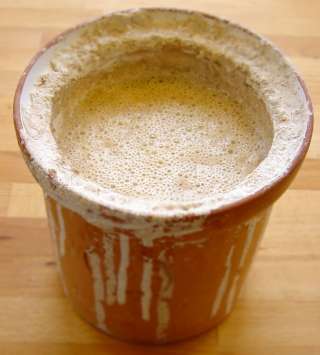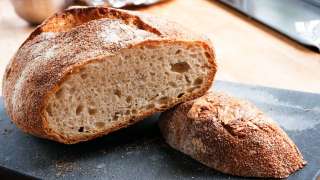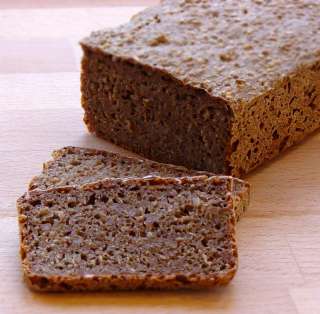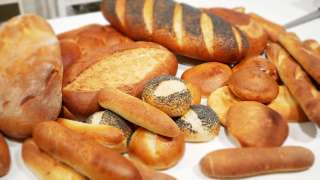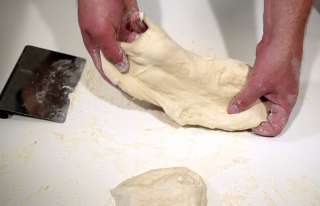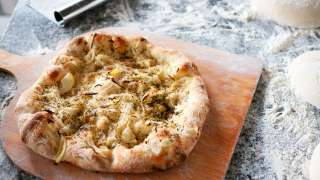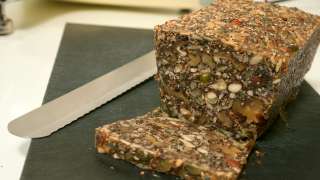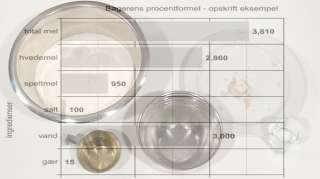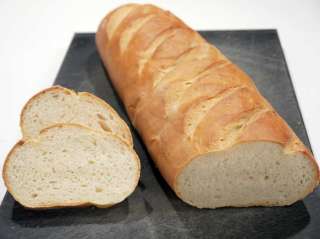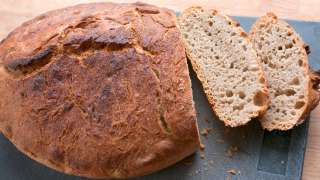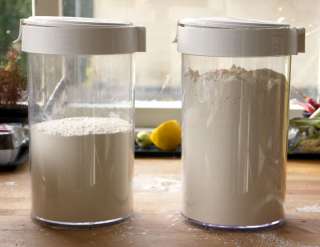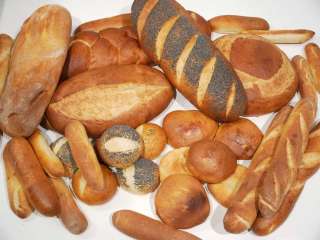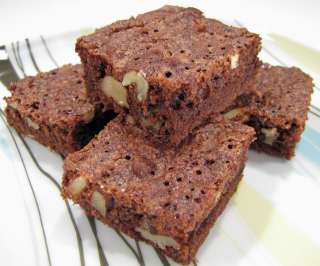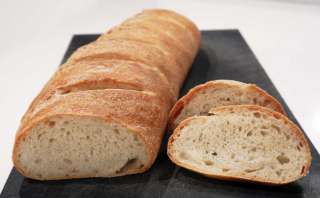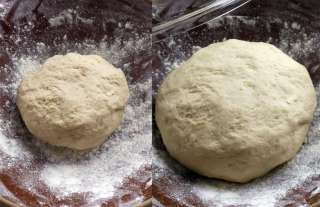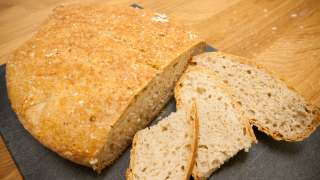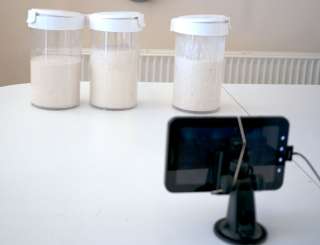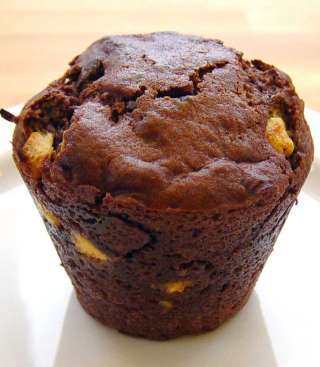subjects:
more ...
Video recipe - It is easy to make your own sourdough. Despite the fact that most people around the world have only heard about this mysterious thing called "homemade bread based on sourdough". The problem is almost always to get started. To make the sourdough. But it is not hard, and it is something we do routinely here in denmark, where most of the bread we eat is sourdough ryebread.
read more ...
Slowly fermented bread. The best bread I have ever encountered is amusingly enough also one of the simplest to bake. It doesn't require kneading and only very little handling. Usually less than 10 minutes. The only drawback is that it has to ferment for a long time, so the process can be difficult to get into a working day.
read more ...
Danes typically eat this type of dark sour rye bread at least once a day. It is our "national bread". We eat it mainly as open sandwiches with spreads and charcuterie. This is a simple but good recipe for rye bread.
read more ...
Bread can be divided into several categories. As soon as you know them, it's easy to see a new recipe and say "ah that's this kind of bread." Which makes it easier to adapt any recipe for your own taste.
read more ...
Video Recipe - We knead bread for three reasons. The first is very simply to mix the ingredients together. The second is that the mixing promotes the formation of the gluten in the flour. It makes the dough more elastic. The third is to bootstrap the fermentation.
In this video I show a basic principle that can be used for any type of dough, and how to implement it for dough with different amounts of hydration.
I also demonstrate what gluten is, and what it does in a bread.
read more ...
What most of us think about when we say baking, is putting the into the oven and to pull it back out again. Hot and delicious. But if you understand the process you can pull out your bread and have it be even more delicious than by luck.
read more ...
Video recipe - whew ... nuts are expensive. But this bread has still, in a short amount of time, become one of my favorite recipes. A bread which is made entirely from nuts, grains, seeds, eggs and oil. Everybody likes it. It is particularly good for cheese, charcuterie, Pâtés, etc. But it is also good with "ordinary" spreads. Or as a snack if you cut it into thin slices and roast it in a pan with a little butter.
read more ...
When making varied and/or large quantities of bread the easiest way to write your recipes are as "bakers percentage". Where ingredients are measured in percents as compared to the total amount of flour. Understanding the bakers percentage also makes you a better baker because they help you understand the structure of different breads recipes instead of just memorising numbers.
read more ...
The white bread is a classic. No doubt about that. Although I have baked "No Knead/The world's best bread" for years, the French bread somehow still leaves the kitchen a lot faster when I bake that :-S So there must be something to it that other loaves simply does not have. I often use this simple and quick recipe that never fails, and does not require anything more than a conventional oven to make. It provides a finished bread in 2 hours.
read more ...
When we bake any bread it goes through 12 stages every time. All right. it's not all twelve stages that are equally important in all kinds of bread. But once you know the 12 stages, and the classification of bread, you will find it less confusing to read the directions in bread recipes. If you will need to read the directions at all.
read more ...
In many recipes the measurements are volumetric. Such as Liters, milliliters, cups, quarts etc. Rather than in weight measurements such as kg, gram, lbs and oz. If you know the recipe, or is somebody who does not have a weight, it's a fine shortcut to do it this way. But it is not without problems using volumetric measurements of flour instead of weight. Here I show why.
read more ...
It's all bread that can be made from the same basic recipe. So here they are, all merged into one. it is based on my "classic french bread recipe". Not the best bread in the world, but very close to what you buy at most bakeries.
read more ...
Brownies basically just is another variation of a pound cake. It has a bit more sugar. Some of the flour replaced with nuts, it has a bit less baking powder and added cocoa. But these small changes are enough to make the brownie a cake of its own. It is dense and heavy, more confetionery than cake. Sweet and strong. Lovely!
read more ...
The "French" bread we make most often here in Denmark, is a typical white bread that is quick to make, but taste of very little. It is not a classic long fermented bread recipe, and can have a tendency to taste slightly yeasty. If you want to avoid that, then this recipe is closer to the classic French bread. Slowly fermented and with a pre ferment. It is not really any more difficult to make, but it must be planned a little ahead of time, as there are some long fermentation periods along the way. So for some people it is impractical for everyday use. But great for a weekend where you want to make "the ultimate French bread".
read more ...
The fermentation stage of the dough is the most important stage when making a good bread. But here are many different ways to do it right. Depending on what you want to achieve. There are also some tricks that can make you a better baker in general, when you know them.
read more ...
I have family members who do not tolerate gluten. So I have experimented with making a good gluten-free bread. Indeed, I've managed to make one good enough that I no longer bake two different kinds of bread when I make bread for the gluten-affected. I can easily eat the gluten-free bread myself. It's not as good as "The World's Best Bread" with wheat flour, but it's still better than just about any bread you can buy in supermarkets or at regular bakeries.
Some times the fermentation times in your recipe just doesn't fit with the schedule you have for the day. Wouldn't it be nice to know how to change the times then? As a rule, I would also like to use as little yeast as possible when I bake, but it must also fit into everyday life. So it'd be nice to be able to change fermentation times by adding more or less yeast. I have had some difficulty finding the exact info on what influence the yeast have on the fermentation times, also in relation to how much fluid there is in the dough. So here's a little biology report with my own experiments. And with lots of videos of dough that rises:-S I'm sure this article is the most geeky I have ever made ... but I was curious.
read more ...
A veritable explosion of chocolate. A muffin that contains three kinds of chocolate filling. Dark, milk and white. The various chocolates makes this recipe tastes completely different than a normal chocolate cake. And then of course there is the orange to give it a little acidity.
read more ...

